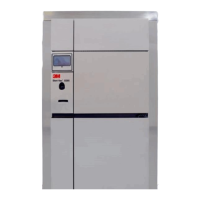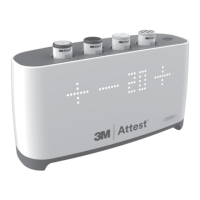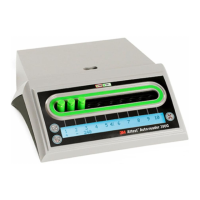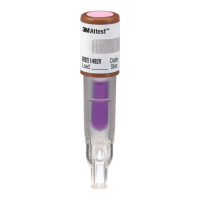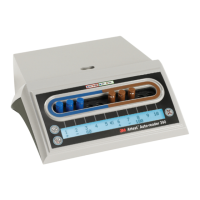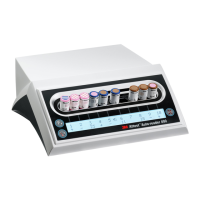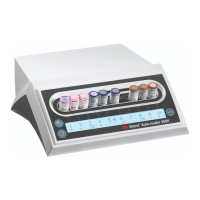22
70-2011-5643-0 Issue Date: 10/2015
3M
™
Steri-Vac
™
Sterilizer/Aerator GS Series
Site Planning and Installation Guide
Local Exhaust Hood Requirements
The 3M
™
Steri-Vac
™
Exhaust Hood is an over-the-door exhaust (e.g. vent) hood that supplements the
room’s directional air flow, and is designed to draw air away from the Operator removing the load from
the chamber. The exhaust hood is connected by 3M Health Care service personnel or authorized 3M
service personnel to a purchaser-supplied dedicated exhaust system during installation.
Monitor the exhaust hood for appropriate air flow (Figure 13). If the 3M
™
Steri-Vac
™
Sterilizer/Aerator
GS Series detects the air flow is too low (<125 CFM) through the exhaust hood (or either of the exhaust
hoods if using a double door unit), the GS Series sterilizer door will remain locked until a minimum three
hours of aeration is complete. See the 3M
™
Steri-Vac
™
Sterilizer/Aerator GS Series Operator Manual for
additional set-up information.
Figure 13. Air Flow to the Exhaust Hood
Exhaust Ventilation System Planning and Design
The following requirements must be met for planning and designing the ventilation system:
• Determine the required air flow and the size, length and number of elbows needed for the ductwork.
Take into consideration that each elbow introduces losses in air flow.
• Calculate the total air flow required for each branch.
• Calculate the static pressure for the entire system using standard industrial ventilation techniques, and
add a 10% safety factor to the air flow and the static pressure to determine the final air flow target.
• Select an exhaust fan to meet the defined requirements.
• Determine if a new exhaust system is needed or if an existing system can be used. If using an existing
system, make sure the existing system meets the GS Series sterilizer equipment specifications.
The diagrams in Figures 14 and 15 show installation options for consideration in planning for the
installation.
• Design and construct the exhaust system in accordance with national, state and/or local fire, health,
and safety codes.
Connect the hood to a dedicated exhaust system. The hood should not be connected to an exhaust
system that re-circulates air into the building.
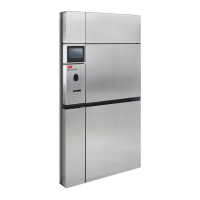
